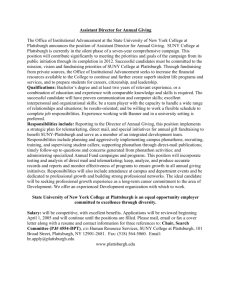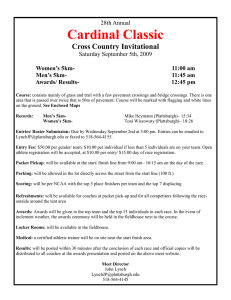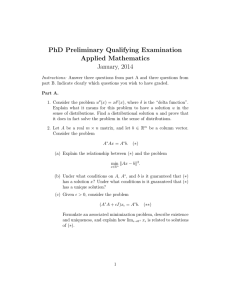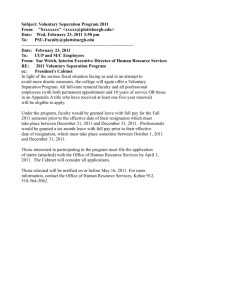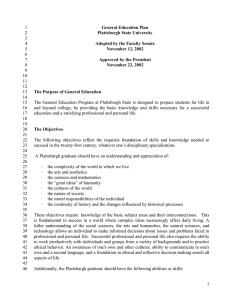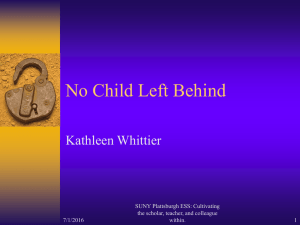A Comparison Of Learning Outcomes and Student Perceptions
advertisement
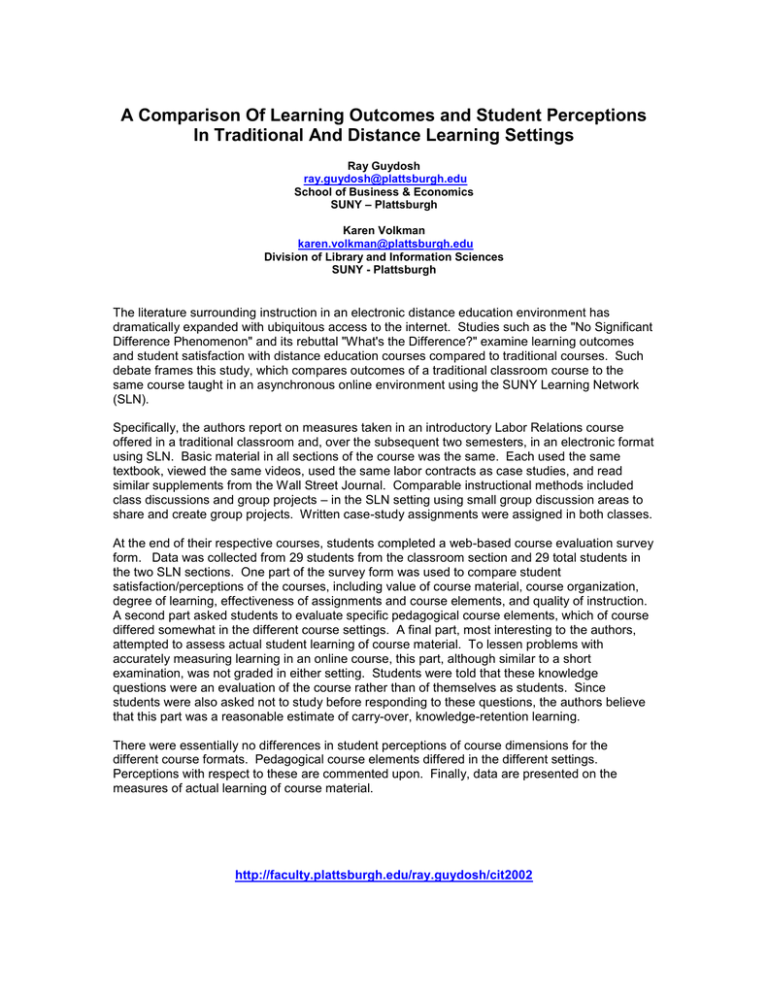
A Comparison Of Learning Outcomes and Student Perceptions In Traditional And Distance Learning Settings Ray Guydosh ray.guydosh@plattsburgh.edu School of Business & Economics SUNY – Plattsburgh Karen Volkman karen.volkman@plattsburgh.edu Division of Library and Information Sciences SUNY - Plattsburgh The literature surrounding instruction in an electronic distance education environment has dramatically expanded with ubiquitous access to the internet. Studies such as the "No Significant Difference Phenomenon" and its rebuttal "What's the Difference?" examine learning outcomes and student satisfaction with distance education courses compared to traditional courses. Such debate frames this study, which compares outcomes of a traditional classroom course to the same course taught in an asynchronous online environment using the SUNY Learning Network (SLN). Specifically, the authors report on measures taken in an introductory Labor Relations course offered in a traditional classroom and, over the subsequent two semesters, in an electronic format using SLN. Basic material in all sections of the course was the same. Each used the same textbook, viewed the same videos, used the same labor contracts as case studies, and read similar supplements from the Wall Street Journal. Comparable instructional methods included class discussions and group projects – in the SLN setting using small group discussion areas to share and create group projects. Written case-study assignments were assigned in both classes. At the end of their respective courses, students completed a web-based course evaluation survey form. Data was collected from 29 students from the classroom section and 29 total students in the two SLN sections. One part of the survey form was used to compare student satisfaction/perceptions of the courses, including value of course material, course organization, degree of learning, effectiveness of assignments and course elements, and quality of instruction. A second part asked students to evaluate specific pedagogical course elements, which of course differed somewhat in the different course settings. A final part, most interesting to the authors, attempted to assess actual student learning of course material. To lessen problems with accurately measuring learning in an online course, this part, although similar to a short examination, was not graded in either setting. Students were told that these knowledge questions were an evaluation of the course rather than of themselves as students. Since students were also asked not to study before responding to these questions, the authors believe that this part was a reasonable estimate of carry-over, knowledge-retention learning. There were essentially no differences in student perceptions of course dimensions for the different course formats. Pedagogical course elements differed in the different settings. Perceptions with respect to these are commented upon. Finally, data are presented on the measures of actual learning of course material. http://faculty.plattsburgh.edu/ray.guydosh/cit2002


